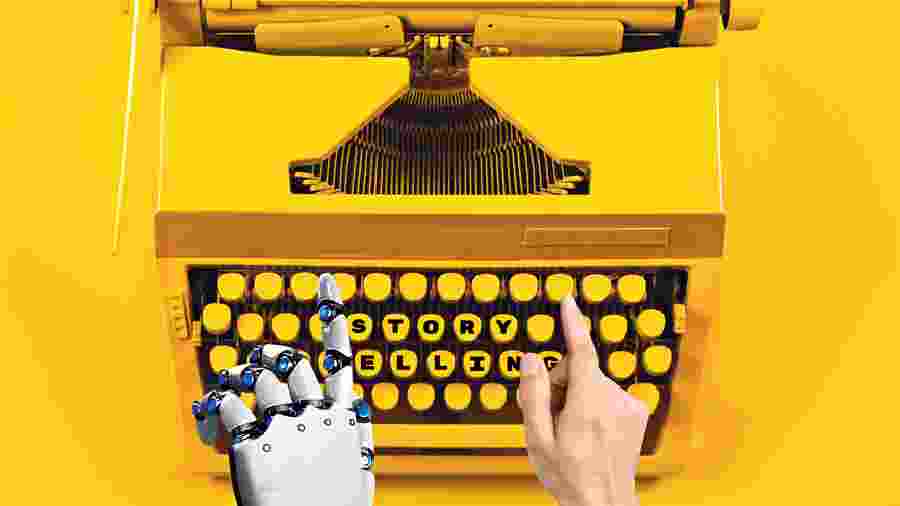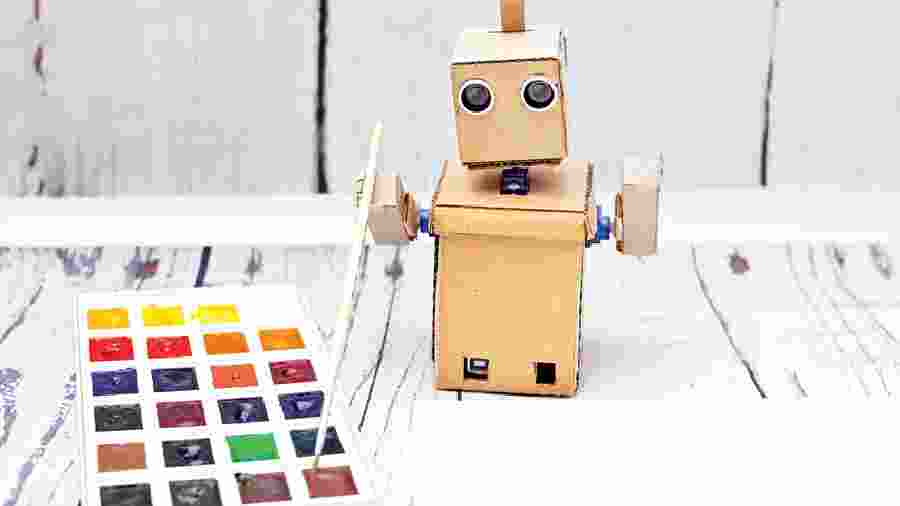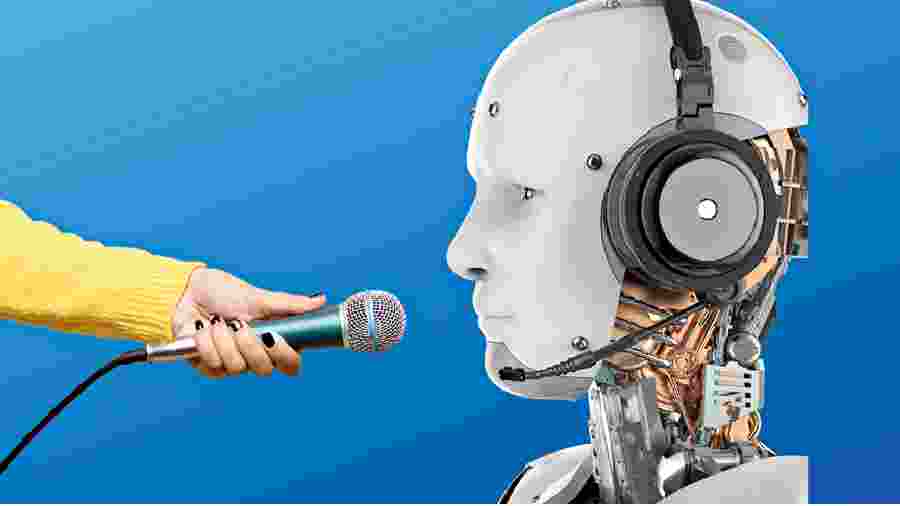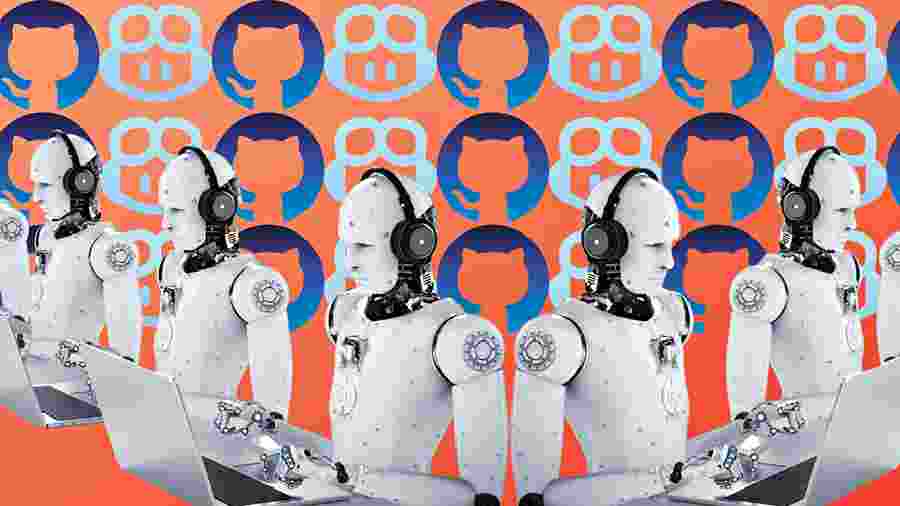Ever since the industrial revolution, there has been the fear of man getting replaced by machines. Consider the idea of universal basic income, the historic antecedents for which can be traced to the ’60s when former US President Lyndon Johnson set up a committee to look at what would happen when humans are replaced by automation/robots. The committee proposed universal basic income but we are still debating the topic because we still think that in the next 10-15 years we won’t have jobs.
The year has just started and all that we have been hearing is coders, marketing content writers, recipe book authors… almost everything will get upended by artificial intelligence or AI. Like it or not, be afraid or not, 2023 will be the gold rush year for AI as more and more articles around organisations like OpenAI will come to the fore. Yes, that’s the organisation pushing out tools like ChatGPT, Dall-E, Copilot and so on.
There are always two sides to the coin. With AI comes advantages and fears. The questions are how society can take advantage of AI and how it will affect us.
AI is not new, but the focus is now stronger
The last few months many of us have come face-to-screen with Dall-E 2, a mash-up of the names Salvador Dali and Wall-E. It can produce a range of images in a matter of seconds. The AI engine has been trained by looking at millions of images available on the Internet as well as the text that accompanies them.
Then came our introduction to ChatGPT, a chatbot that can generate responses with natural language. It can write a story about a mouse who loves cheese as effectively as business proposals.
In the coding community, a tool called Copilot has been upending how programmers work for more than a year. It’s a piece of artificially intelligent software that does some of the typing and thinking for coders. Developed by OpenAI, the private research lab, and GitHub, the Microsoft-owned website where programmers share code, Copilot can autocomplete many tasks for software development. Have coders become obsolete? Nope. Hollywood has drawn a memorable picture of coders listening to Led Zeppelin, gulping coffee and eyeing stale pieces of pizza while frantically typing at the keyboard.

The Telegraph asked Dall-E 2: ‘How will Kolkata look if it snows? The answer arrived within seconds. (Above and below) The platform has been created by OpenAI

The truth is, coding languages such as Python have been making things easy since the 1990s, taking care of tasks like memory management. When we entered the 2000s, the open-source movement greeted a generation of programmers who didn’t have to write things from scratch. Coders, in fact, haven’t been frantically typing at the pace of Hollywood characters for a long time; they have been stitching together parts written by others, making apps more sophisticated than ever before.
In the coming years we may see Copilot-like AI in the hands of millions of people who can’t code. Consider creators on YouTube. They are creating brilliant short films and even longer-form videos but that isn’t stopping a Christopher Nolan from thinking about the next big film.
Before the pandemic, former RBI governor Raghuram Rajan addressed the issue and had an interesting take. “Society has always found ways to adapt even if there is always a claim by technologists that this time it’s going to be different. That’s a source for hope. Another source: There is always hype around technology. We always think the future will come fast. Since the 1950s, scientists have been thinking AGI (artificial general intelligence) is coming. It’s always coming 15 years from now. Even today.”
Driving the AI movement
It’s always a number of companies that drive a movement but only a few become synonymous with it. For AI, it’s the San Francisco-based OpenAI, led by Sam Altman, who became well known in Silicon Valley as the head of the start-up builder Y Combinator.
The 37-year-old CEO is unlike heads of most tech companies as he doesn’t have hardware to sell, at least not at the moment. He is unlike Mark Zuckerberg or Evan Spiegel because he doesn’t have a social media platform to promote. And that makes him one of a kind.
When ChatGPT became publicly available late last year, a number of Silicon Valley bigwigs worried they were dealing with a technology that could disrupt their businesses. Not Microsoft.
It is Microsoft CEO Satya Nadella’s big moment. His company has been investing in OpenAI since 2019. First it was $1 billion and in the years since, another $2 billion was reportedly put in. Now, $3 billion is a huge amount to build chat bots. Nadella wasn’t done.
The Hyderabad-born CEO worked with AI technology when he took up the offer to run Microsoft’s Bing search engine. Of course, most people laughed as they compared it to the power of the Google search engine. The fact remains, he understood the importance of AI.
According to reports in Semafor and then by The New York Times, Microsoft is poised to challenge Big Tech competitors with AI. The company is reportedly in talks to invest another $10 billion in OpenAI as it seeks to push its technology even further.
What are the immediate repercussions?
The new generative AI technologies have the potential to reinvent everything from online search engines like Google to digital assistants like Alexa and Siri. For Microsoft it means expanding its reach.
“It is just fascinating to see how these generative models are capturing the imagination. I think it is a golden age,” Nadella told developers in India during his recent visit.
For Google, this news is not welcome, or, at least, that’s what some believe. According to reports, the release of ChatGPT led Google’s management to declare a “code red”. Google has been the gateway to the world of information for over 20 years and this means Google is not going to buckle under pressure.
You may have noticed, Google answers in search are becoming more and more naturally phrased. At first, it was just about showing a few links to a query. That has evolved. Google already has BERT (Bidirectional Encoder Representations from Transformers), one of the first large language models developed by Google.
The company’s work on a language/conversation model called LaMDA (Language Model for Dialogue Applications) has already been showcased. It was unveiled at I/O 2021 “to converse on any topic” but Google back then said it was still in the R&D phase. Google also has MUM (Multitask Unified Model) that “allows people to naturally ask questions across different types of information”. And there is PaLM (Pathways Language Model). If MUM allows questions to be asked, LaMDA can hold conversations while PaLM is what can answer questions.
For Google, the answer to the new chat bot could be LaMDA, which received a lot of attention last year when a (now fired) Google engineer, Blake Lemoine, claimed it was sentient. It wasn’t true but the technology appears to have improved in recent months.
The second repercussion is being seen in New York and Seattle schools and it’s a matter of time before it spreads to other cities and countries.
ChatGPT has given birth to fears among teachers that students may cheat on homework. Public schools in NY have blocked ChatGPT access on school computers and networks, citing “concerns about negative impacts on student learning, and concerns regarding the safety and accuracy of content”. In Seattle — the home to Microsoft — some schools have restricted access.
Frankly, banning technology doesn’t help. Blocked on school networks, students can use phones and laptops to access the same. Calculators are allowed in certain classes and restricted for certain assignments. The same can be done here. Second, allow students to use ChatGPT to get a framework of what they are writing. The technology can offer a broad outline but not a lot of details. It can also be used as a virtual debating partner. The idea is to pair ChatGPT with in-class discussions.
Understand the limits
Like with any new technology, everyone is interested in trying it out, especially since it’s free. No technology can remain free. In Gmail, you often let AI complete sentences and you don’t have a problem with that. Or think of Grammarly or predictive text system on the phones — you don’t have a problem with them either.
ChatGPT and Dall-E have limitations and all that the former says is not true. In case ChatGPT is used to code a programme, it can only fall back on what has been compiled in the past. There are new security issues and the code that needs to be written can’t be done using ChatGPT.
As important as understanding limitations is to understand what you are giving up. ChatGPT is probably not storing your information but are you willing to share the most personal details?
Legal complexities
- Learning model: ChatGPT is trained on text data, which includes books, articles and other written material, which means the model has the potential to infringe on intellectual property rights. The same goes for Dall-E 2, which mimics styles and parts of paintings that are already there.
- Bias: Since this is an AI model, it doesn’t have an understanding of context, so it may end up generating defamatory content, leading to legal action.
- Fake news: Being based on previously generated text content also means that the information it has been fed may not be verified. The conversational text may contain misleading content.
- Same text: We don’t know if ChatGPT or Dall-E 2 may end up producing the same text or illustration for two parties. If that happens, who does the text belong to?
- Should ChatGPT be cited: If part of a paper has been generated by ChatGPT, should the chat bot be cited as source?
Meet Sam Altman

The CEO of OpenAI is only 37 years old and he is changing the shape of Silicon Valley. In his mid-20s, he sold his start-up — Loopt — for $43.4 million but his big moment came when he became a partner at iconic start-up shop Y Combinator, which has funded start-ups like Aribnb and Dropbox. He is at the forefront of AI that’s disrupting every field.
A few years ago he wrote in his blog: “Almost always, the people who say ‘I am going to keep going until this works, and no matter what the challenges are I’m going to figure them out’, and mean it, go on to succeed. They are persistent long enough to give themselves a chance for luck to go their way.”
The important question around OpenAI is how it would make money. A few years ago, Altman said:“We’ve made a soft promise to investors that, ‘Once we build a generally intelligent system, that basically we will ask it to figure out a way to make an investment return for you.’”
Know your AI fears

ChatGPT is the new buzzword. Simply type in the details you want in an essay and it will be before you in no time. Illustration: The Telegraph
ChatGPT
It’s the latest in the chat bot world. Brought to you by OpenAI (Elon Musk was among the early financial backers), you can ask any question at a text promote (write a song in the style of Taylor Swift, write a letter to the teacher, what is R-Wave in ECG) and in a few seconds you will be given an answer in, say, 500-600 words. Over a million users explored it within its first few days of launching on November 30.
Before its arrival, chat bots have been meh with some good answers coming now and then. That has completely changed.
So far we have seen ChatGPT being asked to write essays, college applications and even short scripts. The results are largely winding answers, with few specifics. Essays don’t evoke emotions but there’s clearly a voice in it, however mechanical. At times the output may appear vague but, at the same time, creepy and points to a nightmarish future. There is always that potential where chat bots can be used by unwanted political entities or make conversations around race and ethnicity scary.
According to reports, unlike Google, ChatGPT doesn’t crawl the web for information on current events, and its knowledge is restricted to things it learned before 2021.

Dall-E 2 is a text-to-image platform from OpenAI
Another creation of OpenAI, Dall-E 2 requires you to type in the picture that you want, like “how will Calcutta look if it snows?”
The technology that is being used goes far beyond pixel count as something called “inpainting” is being used, that is, replacing one or more elements in an image with another. So you can have an astronaut picking flowers or a cat having coffee while riding in a car. Beyond creating an image in a single style, you can implement different art techniques, like styles of drawing, oil painting, 1960s movie poster and so on.
Text to picture technology is having its moment. There is also Midjourney, which requires you to fill out a form; there is NightCafe, which pushes a similar agenda; and AI Art Maker, which has a more simplistic approach.

Digital narration is a new tool from Apple that brings in digital narrators that sound like human voices. Illustration: The Telegraph
Digital narration
Probably the biggest change to hit the burgeoning world of audiobooks, Apple has quietly launched a feature called “digital narration”. The feature is for its Books app and it will let users listen to written titles as audiobooks, narrated by artificial intelligence. It’s a feature (not available in India at the moment) that may upend the fast-growing audiobook market.
To put the importance of the feature in context, the growing popularity of the audiobook market saw sales last year jump 25 per cent, bringing in more than $1.5 billion. The global market for audiobooks may cross $35 billion by 2030.
At the moment, the audiobook model involves authors or voice actors narrating books. It’s a time-consuming process that costs thousands of dollars for publishers. Usually, it’s the big publishers who enjoy an advantage. With digital narration, smaller publishers and authors can technically put out an audiobook at a down-to-earth cost.
Apple’s official website mentions that the feature is initially restricted to romance and fiction titles and two digital voices have been listed, Madison and Jackson, while two more voices (Helena and Mitchell) are on the way for non-fiction titles. Also, at the moment, the feature is only available in English. “Primary category must be romance or fiction (literary, historical, and women’s fiction are eligible; mysteries and thrillers, and science fiction and fantasy are not currently supported),” the Apple website reads. The two voices that we will get to hear are based on “human narration” and Apple says it will continue to grow the human-narrated audiobook catalogue.
Publishers/authors retain audiobook rights, and there are no restrictions on producing and distributing other versions of the audiobook.
The titles using the new feature will come with a notice saying they’re “narrated by Apple Books” and there will be a mention of the specific name of the artificial narrator used.

Copilot has become an assistant for coders but there have been issues around copyright. Illustration: The Telegraph
Last year, Microsoft-owned company GitHub released Copilot, which turns basic instructions into functional computer code. Once again, it’s developed by OpenAI and it is changing the way programmers function.

Character.AI mimics the tone of famous people if they take to online chats. Illustration: The Telegraph
Character.AI
The latest on the block is the new site Character.AI, on which “users can chat with reasonable facsimiles of everyone from Queen Elizabeth or William Shakespeare to Billie Eilish or Elon Musk. You can hold conversations with bots who maintain the tone of famous people. A bot can replicate the way Shakespeare may have responded to chat messages.

GPTZero tries to sniff it out
Teachers, companies, writers… everyone will be affected by ChatGPT. How will a teacher know if the paper that a student has turned in has been created using a bot? Edward Tian, a 22-year-old student at Princeton University, has an app to do just that.
Called GPTZero, it analyses different properties of a text. Success has come in heaps and his effort has received more than seven million views from people all over the world — many of them teachers. The student of computer science and journalism came upon the idea during his winter holiday break at a coffee shop in his hometown of Toronto. According to the BBC, the app works by looking at two variables in a text — perplexity and burstiness — and it assigns each of those variables a score.
